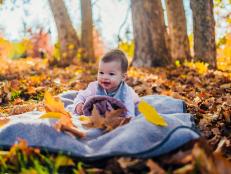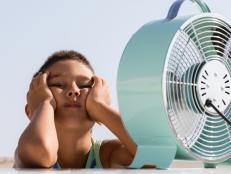New CDC Study Names Unsafe Bedding as the Leading Cause of Unexpected Infant Death
Thousands of infants die each year, but the CDC says these losses are all preventable.


Aline Gomes
For decades, pediatricians and the American Academy of Pediatrics have shared safe sleep practices. New parents and caregivers are told that the safest place for their babies to sleep is in a crib with a firm mattress, and without items that could cause suffocation — soft bedding, stuffed animals, bumpers, or blankets. However, according to a new study from the CDC, 3,600 babies die each year in the US because of "unsafe sleep factors."
Despite the efforts of public health officials, sudden unexpected infant death (SUID) is the leading cause of death for infants between 1 month and 1 year of age. SUID is a broad term that covers sudden infant death syndrome (SIDS), accidental suffocation in a sleeping environment, and other deaths from unknown causes.
The findings, which were published in The Journal of Pediatrics, analyzed data from 4,929 cases of SUID from 2011 to 2017. What they found was that soft bedding was associated with 72 percent of the cases. These babies were "sleeping on soft surfaces or with suffocation hazards like blankets, pillows, and crib decorations" that were added to the crib by parents or caregivers.
Further, the research shows that of those cases, 31 percent of the deaths were caused by suffocation and 75% of those cases resulted from "airway obstruction attributed to soft bedding." The numbers are staggering and heartbreaking.
"These deaths are still happening — and they happen to well-meaning parents," said Dr. Rachel Moon, who chairs the American Academy of Pediatrics task force on SIDS. "We have remained at the same rate of sleep-related deaths since around 1998, and the rate in the US is much higher than that in most developed — and even some not-so-developed countries."
Only 1% of the deaths analyzed were confirmed as "unexplained" — meaning there wasn’t any soft bedding or other unsafe sleep surfaces around. Researchers noted that factors for the other 27% couldn't be determined because of insufficient information.
Whether it's crib bumpers, stuffed animals, blankets, unsafe co-sleeping practices, or babies sleeping on unsafe surfaces (like couches or adult beds) that are to blame, experts say these deaths are preventable — but babies are continuing to die in these circumstances.
So, what can parents do? The CDC recommends that babies sleep in a crib or bassinet with a firm mattress and a tight fitted sheet in the parents’ bedroom for the first six months or the first year of life. Pacifiers are also encouraged, but should never be attached to clothing or toys. Make sure there is nothing inside the crib with the baby — no toys, blankets, or stuffed animals.
It can be confusing for parents because decorative crib sets are still sold with bumpers, soft mattresses, and stuffed animals. Also, many grandparents and caregivers don’t follow the updated guidelines for safe sleep — this can be a difficult topic for parents to discuss. The researchers of this study hope the heartbreaking numbers encourage pediatricians to start the safe sleep talks before the baby is born. They hope these circumstances will encourage parents and caregivers to take the simple steps to make their baby’s sleep space safe.















